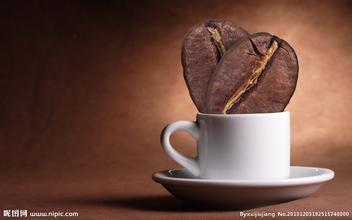Description of taste and flavor of Honduran coffee beans A brief introduction to the origin of grinding scale
Description of taste and flavor of Honduran coffee beans A brief introduction to the origin of grinding scale
High-quality coffee in Honduras uses water washing to deal with coffee beans, usually after soaking, when the defective fruit will surface, it can be discarded first. Then put the good fruit into the fruit peeling machine and peel off the peel with the rotating force of the machine. Peeled fruits are screened by machines to select fruits of high quality. Usually the bigger the fruit, the better the maturity. Coffee in Honduras is dried in the sun, so there is always a hint of fruity in the taste.
For coffee production, the geographical conditions of Honduras are no less than those of its neighboring coffee-producing countries such as Guatemala and Nicaragua. There are 280000 hectares of coffee plantations in Honduras, mainly small coffee plantations, most of which are less than 3.5ha. These coffee plantations account for 60% of the total coffee production in Honduras.
High-quality coffee in Honduras uses water washing to deal with coffee beans, usually after soaking, when the defective fruit will surface, it can be discarded first. Then put the good fruit into the fruit peeling machine and peel off the peel with the rotating force of the machine. Peeled fruits are screened by machines to select fruits of high quality. Usually the bigger the fruit, the better the maturity. Coffee in Honduras is dried in the sun, so there is always a hint of fruity in the taste.
Honduran coffee comes from El Salvador. At first coffee production was in a state of unavoidable heat until the frost in Brazil in 1975. At that time, Brazil was badly hit and coffee production plummeted, while Honduras took the opportunity to "take the top". Coffee production soared from 500000 bags to 1.8 million bags and was ransacked. It was only after that that coffee production in Honduras really developed. Now Honduras ranks second in coffee exports in China and the United States (second only to Guatemala), and coffee is mainly exported to the United States and Germany.

Important Notice :
前街咖啡 FrontStreet Coffee has moved to new addredd:
FrontStreet Coffee Address: 315,Donghua East Road,GuangZhou
Tel:020 38364473
- Prev

A brief introduction to the variety treatment method of taste and flavor description of Kenyan coffee manor brand
Kenya Coffee Manor Brand Taste and Flavor description Variety treatment brief introduction Mugaya Manor has received assistance from its partner CMS Coffee Management Service. The long-term goal is to achieve the goal of increasing coffee production through training, input and year-round agricultural practice seminars for coffee farmers. Its vision is to create a transparent with small coffee farmers
- Next

Dan Mengqi Sidamo Coffee Flavor description characteristics brief introduction of taste grinding scale
Dan Mengqi Sidamo Coffee Flavor description, Taste Grinding scale A brief introduction to the taste grinding scale of Ethiopian Japanese beans, there are usually some oysters, such as stones or twigs, so when grinding, special attention should be paid to Sidamo, like Yegashifi, that fine coffee beans are grown organically and picked artificially to ensure the health and quality flavor of the coffee. It's worth mentioning.
Related
- Detailed explanation of Jadeite planting Land in Panamanian Jadeite Manor introduction to the grading system of Jadeite competitive bidding, Red bid, Green bid and Rose Summer
- Story of Coffee planting in Brenka region of Costa Rica Stonehenge Manor anaerobic heavy honey treatment of flavor mouth
- What's on the barrel of Blue Mountain Coffee beans?
- Can American coffee also pull flowers? How to use hot American style to pull out a good-looking pattern?
- Can you make a cold extract with coffee beans? What is the right proportion for cold-extracted coffee formula?
- Indonesian PWN Gold Mandrine Coffee Origin Features Flavor How to Chong? Mandolin coffee is American.
- A brief introduction to the flavor characteristics of Brazilian yellow bourbon coffee beans
- What is the effect of different water quality on the flavor of cold-extracted coffee? What kind of water is best for brewing coffee?
- Why do you think of Rose Summer whenever you mention Panamanian coffee?
- Introduction to the characteristics of authentic blue mountain coffee bean producing areas? What is the CIB Coffee Authority in Jamaica?

